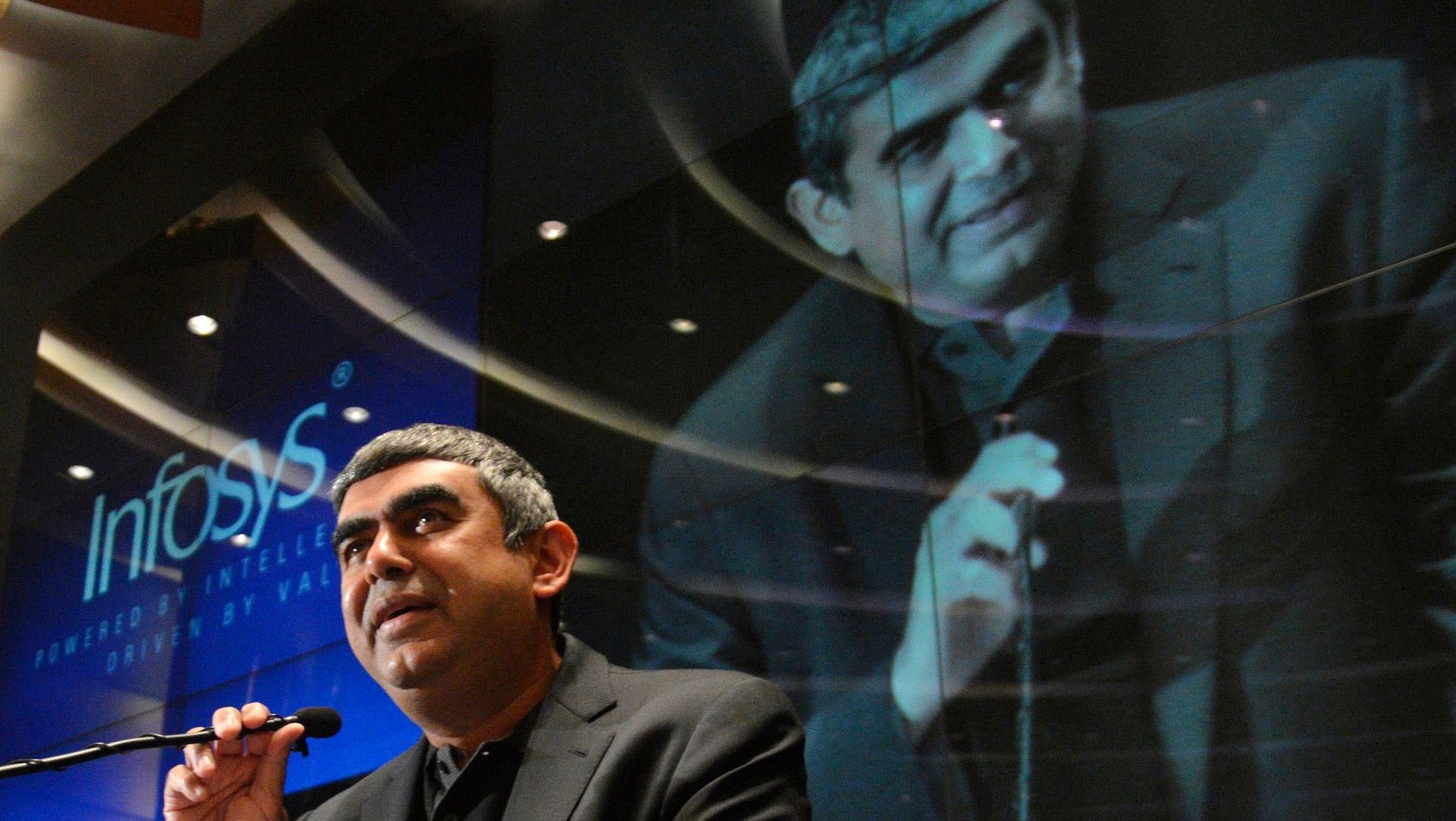All that was broken at Infosys can be good for the new CEO
Vishal Sikka is taking over as Infosys CEO amidst a range of challenges: top management churn, financial underperformance, internal changes, tough market and bad press.


Vishal Sikka is taking over as Infosys CEO amidst a range of challenges: top management churn, financial underperformance, internal changes, tough market and bad press.
In fact, all these might turn out to be good for him. Here’s how.
Top management churn
Three CEO contenders and ten other top executives left Infosys in the last 12 months–leading to observers questioning the company’s ability to meet growth targets.
How it will help Sikka:
He doesn’t need to deal with the CEO hopefuls either leaving the organisation soon after he steps in or worse, being around with a baggage of resentment. What Murthy did in his second innings, goes one narrative, was a cleanup. There were fiefdoms. And in Murthy’s own words, people who were not adding any substantial value to the organisation.
Underperformance
Infosys has been growing slower than its rivals, losing market share. If the market expected a miracle from Narayana Murthy, it didn’t happen.
How it will help Sikka:
Miracles take time. Behind all the bad news on its income statement, there are signs of change. For example, now it looks at overall profitability of a project, rather than expecting good margins every quarter or year. Its focus on big projects has also started yielding results–it has more million dollar projects today than a year ago–but it will reflect in revenues after several quarters. Some of these initiatives started even before Murthy stepped in, and will show results when Sikka is a few months into the job.
Internal changes
Under Murthy, Infosys started paying more attention to individual productivity rather than the project-wide productivity. The latter demanded excellent processes, which Infosys is reputed for. The former demands tools to track them–Infosys is in the process of setting these up–and motivation that goes beyond money and promotions. Such changes are often painful and chaotic. Combined with low revenue growth these changes probably contributed to more employees leaving the company than ever before.
How it will help Sikka:
But this is the right approach for today’s organisation. Top valuations these days go to companies that are entrepreneurial, create fast/fail fast, pivot. There were clear indications at the press conference yesterday that Infosys would take that path. Murthy, again, made it easy for Sikka.
Tough market
Infosys’ dependence on discretionary spending (the money clients spent on transformational deals as against ‘keeping the lights on’ deals) was higher (about a third of its revenues) compared to its rivals (less than a fifth of their revenues). In a tough market, clients typically spent less on the transformational deals. Infosys suffered more.
How it will help Sikka:
In three ways. First, it’s good to start at the bottom rather than at the peak. Second, Murthy tempered market expectations. And third, there are signs that the market–both US and Europe–is picking up. Once things start turning around, Infosys can seek to maximize the upside.
Bad press
It’s no secret that Infosys has been getting bad press despite Narayana Murthy’s efforts to point out the positives.
How it will help Sikka:
Narayana Murthy’s efforts were in vain partly because journalists felt he was wrong to go back on his words (he had said there will be no place in Infosys for founders’ family members), and because it seemed like he was incapable of letting Infosys go. His entire tenure was seen through that lens. The financial results didn’t help. Yesterday’s announcement changed the narrative completely.
It’s now up to Sikka to make the best use of the situation.
Follow Ramnath on Twitter @nsramnath.